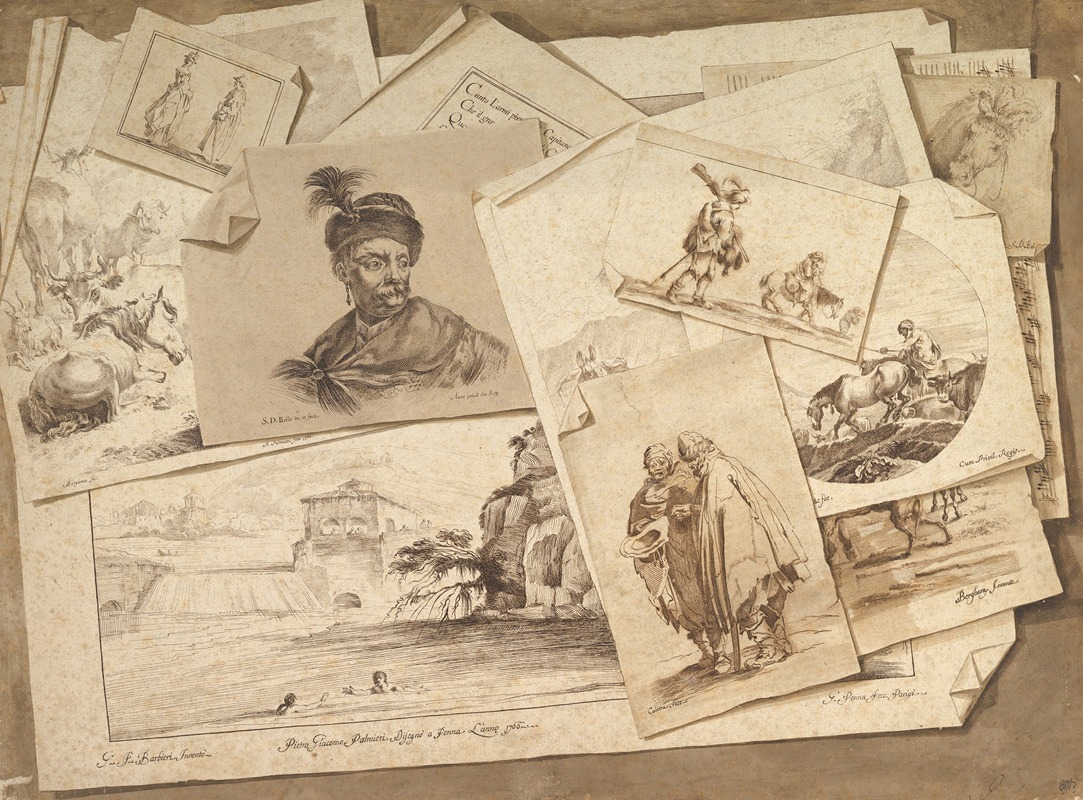
Palmieri was born in Bologna, where he studied at the Accademia Clementina di Bologna with Ercole Graziani (1688-1765). He was invited to Parma by Guillaume du Tillot (1711-1774), a leading minister who was trying to make the court there a cultural centre. It was in Parma that Palmieri developed his style of landscape, for which he was later to become recognised.
His works generally were strongly influenced by seventeenth-century Dutch art, Italian painters, such as Salvator Rosa (1615-1673) and Guercino (1591-1666), and contemporary French works, particularly those of Claude-Joseph Vernet (1714-1789). Typically, a few rustic figures, sometimes with accompanying animals, are dotted about rugged, isolated landscapes; a group of these landscapes were engraved and published as Il Libro dei paessaggi in 1760. Palmieri lived in Paris for eight years then moved to Turin in 1779, where he worked for the Savoy court as an advisor for the royal collection of prints and drawings. He also produced witty trompe l’oeil drawings.

